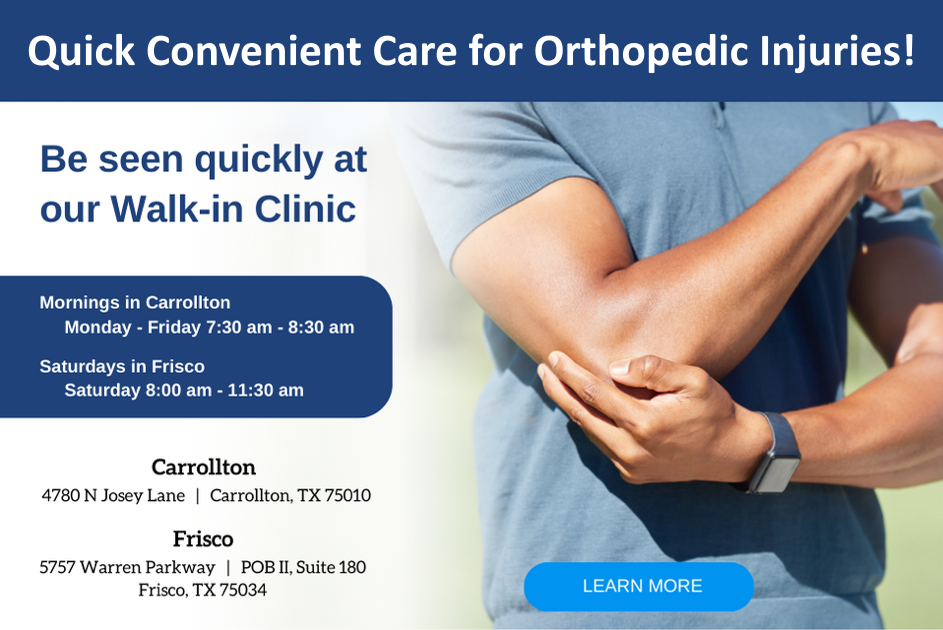When knee pain makes everyday movement feel like a battle, it’s easy to assume that a full knee replacement is the only solution. But for many patients, the damage is isolated to just one part of the joint. That’s where partial knee replacement offers a smarter, less invasive path to relief.
Dr. Brian Fuller, an orthopedic surgeon at OrthoTexas, performs partial knee replacements to help patients get back on their feet faster with a gentler surgical impact and a more natural feel. This targeted procedure addresses only the damaged area, preserving healthy bone and tissue while delivering lasting pain relief.
A Smart Fix for One-Sided Knee Pain
The knee can be divided into three compartments: medial (inside), lateral (outside), and patellofemoral (front of the knee). A partial knee replacement focuses only on the affected compartment, preserving the healthy areas of the joint.
“It’s essentially a resurfacing operation,” explains Dr. Fuller. The goal is to remove only the damaged bone and cartilage, then fit a replacement implant that restores function while preserving the healthy parts of the knee.
When Nonsurgical Options Fall Short
Many patients try to manage their pain with conservative treatments like physical therapy, anti-inflammatory medication, joint injections, and activity changes. While these strategies can help, they’re not always enough.
If knee pain continues to affect your daily life despite these efforts, it may be time to explore a surgical solution. Partial knee replacement is often the next step when other options no longer provide relief.
Is Partial Knee Replacement Right for You?
“The best candidate has isolated symptoms and radiographic evidence of arthritis,” says Dr. Fuller. This means patients should have arthritis limited to one compartment and show those findings clearly on weight-bearing X-rays.
Before surgery is recommended, most patients explore non-surgical options first. “Pain that limits the quality of life despite appropriate conservative measures to include activity modification, anti-inflammatory medications, injections and therapy” is what typically leads to surgery, says Dr. Fuller.
“There’s no hard cutoffs with regards to age,” he adds. Partial knee replacement is a good option for younger patients looking to preserve bone and delay more extensive surgery, as well as for older patients who may benefit from the less invasive approach and shorter recovery.
What to Expect from Surgery and Recovery
The surgery involves removing the damaged surface of the knee and implanting a device designed to match the patient’s anatomy. The procedure is less invasive than a total knee replacement as it only requires exposure of the involve compartment.
Recovery tends to be faster than total knee replacement. “By six weeks, I would let a person do any activity they felt comfortable doing,” says Dr. Fuller. Most patients walk the same day and return to daily activities unassisted shortly after. More strenuous activity is typically safe around one month.
“A full recovery from a partial knee usually takes around three to six months,” he says. “By six weeks, most people are able to do what they feel capable of doing without restriction.”
How Long Do the Results Last?
Modern implants are more durable than ever, and for many patients, the procedure can provide long-term results.
Partial knee implants are designed to last. “I recently, actually just replaced the plastic in the partial knee replacement that was done 22 years ago,” says Dr. Fuller. In the latest American Joint Replacement Registry report, the revision rate for Medicare beneficiaries at 12 years was only 4%. “Depending on your age at the time of surgery, there’s a good chance it’s the last knee surgery you’ll need.”
For many patients, that kind of longevity makes partial knee replacement a reliable, long-term solution.
What If Arthritis Progresses?
Partial knee replacement doesn’t limit your future treatment options. If arthritis progresses to other compartments in the future, patients can convert to a total knee replacement or undergo another partial procedure in a different area of the joint.
Ready to Move Without Pain?
Don’t let knee pain hold you back from an active life. Whether it’s walking without discomfort, getting back to your favorite activities or simply moving through the day with ease, relief is within reach!
Schedule a consultation with Dr. Brian Fuller at OrthoTexas. With expert insight and a personalized approach, he’ll help you understand your options and guide you toward a treatment plan that supports your goals and your lifestyle.


